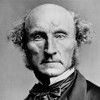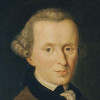“ For example, a man who is young cannot at the same time be old; but the same man can very well be at one time young, and at another not young, that is, old. ”
Immanuel Kant, Critique of Pure Reason (1791). copy citation
| Author | Immanuel Kant |
|---|---|
| Source | Critique of Pure Reason |
| Topic | time example |
| Date | 1791 |
| Language | English |
| Reference | |
| Note | Translated by J. M. D. Meiklejohn |
| Weblink | http://www.gutenberg.org/files/4280/4280-h/4280-h.htm |
Context
“Not to mention the superfluousness of the addition of the word impossible to indicate the apodeictic certainty, which ought to be self-evident from the proposition itself, the proposition is affected by the condition of time, and as it were says: “A thing = A, which is something = B, cannot at the same time be non-B.” But both, B as well as non-B, may quite well exist in succession. For example, a man who is young cannot at the same time be old; but the same man can very well be at one time young, and at another not young, that is, old. Now the principle of contradiction as a merely logical proposition must not by any means limit its application merely to relations of time, and consequently a formula like the preceding is quite foreign to its true purpose.”
source



